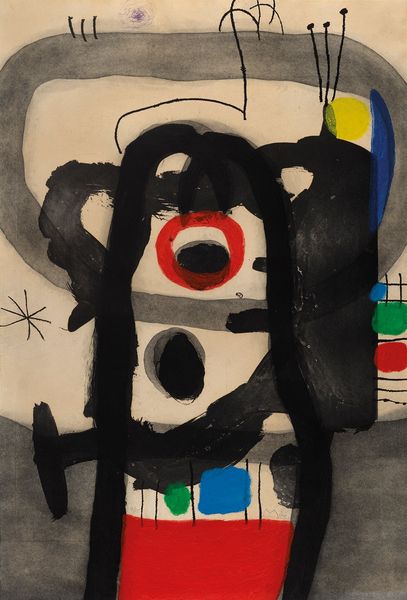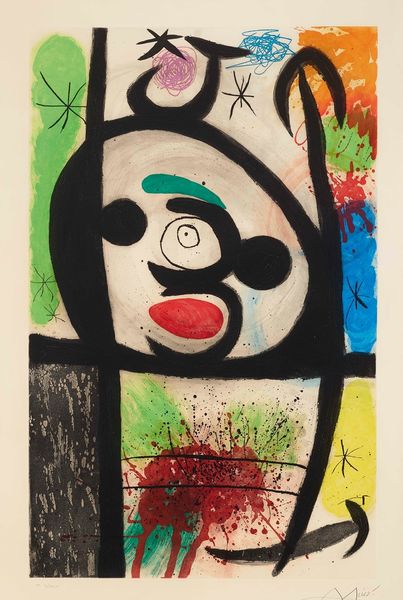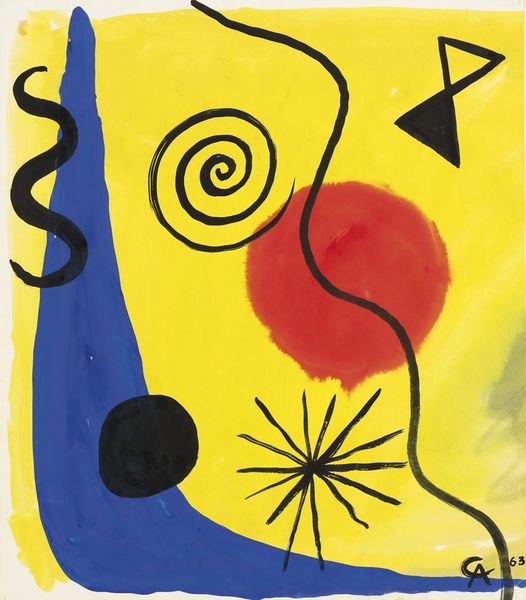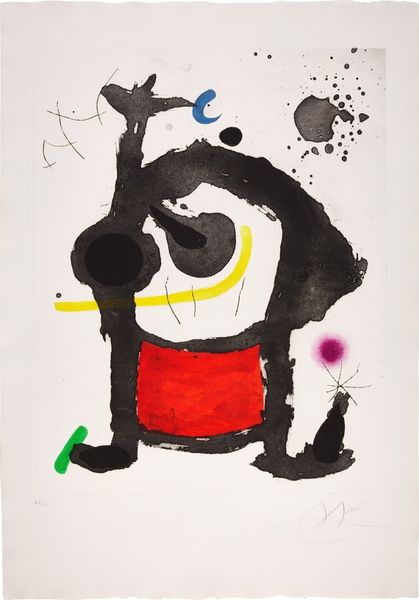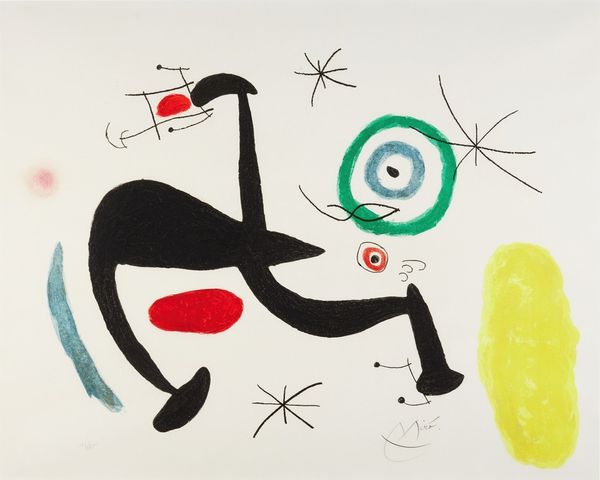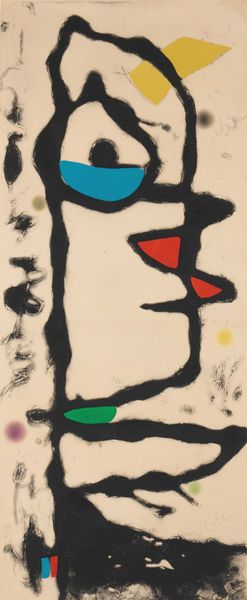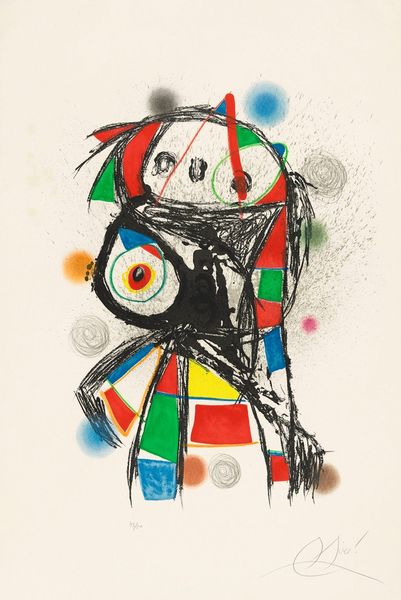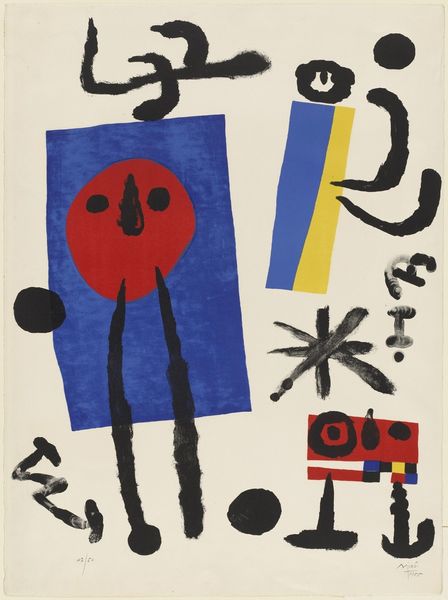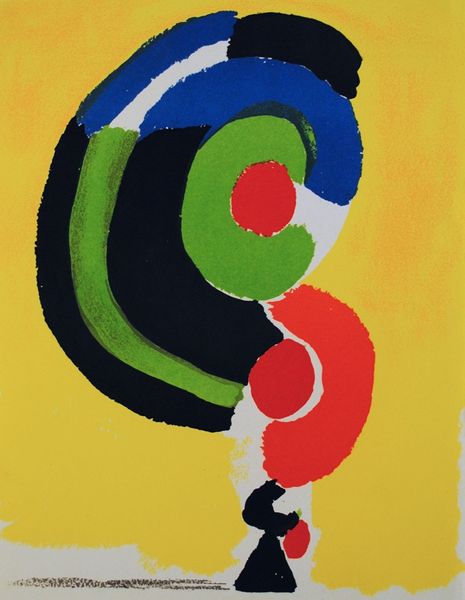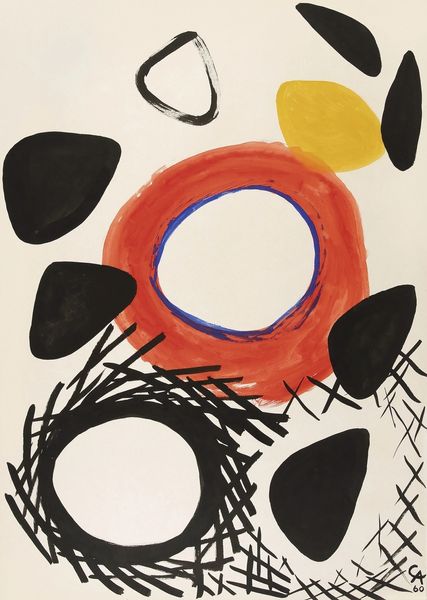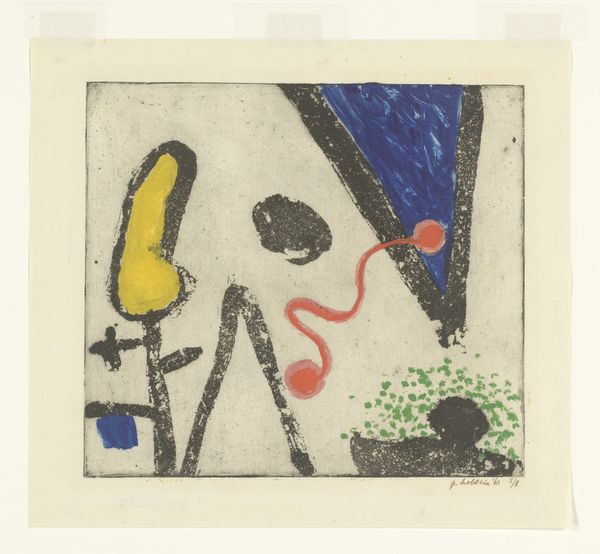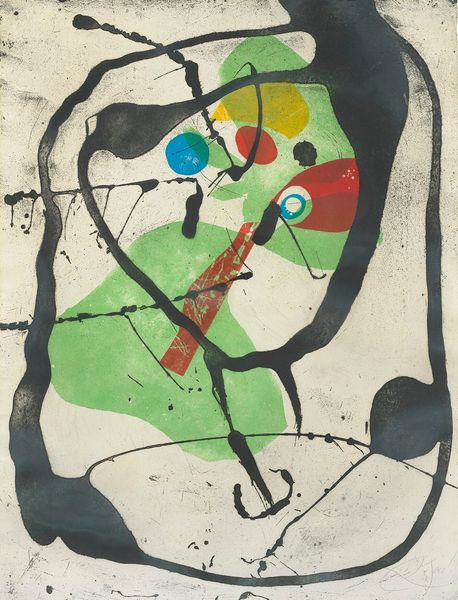
Copyright: Modern Artists: Artvee
Curator: "Equinoxe," dating back to 1967 and crafted by Joan Miró, strikes me as remarkably playful. The mixed-media approach adds a distinctive layer of depth, doesn't it? Editor: Playful is a good word. Immediately, I am struck by the whimsical configuration. The basic forms evoke a figure, yet everything remains wonderfully ambiguous and open to interpretation. The palette, with its selective use of black, red, yellow, and blue, contributes to its graphic strength. Curator: It’s interesting to see how Miró, especially during this period, increasingly focused on distilling figures and objects down to their most fundamental shapes. This simplification could be viewed as a reflection of the cultural and political shifts of the late '60s, a desire to cut through the noise and reach a primal visual language. Editor: Yes, and let's consider the role of line here. It isn't simply contour; it’s a dynamic force, defining forms and suggesting movement. Note also the flatness of the picture plane; while suggestive, the artwork abstains from realistic depth, pushing the elements to exist almost entirely on the surface. Curator: This emphasis on the surface ties in with a broader trend within the avant-garde—challenging traditional notions of artistic skill and representation. Think about how Miró and his contemporaries embraced chance and improvisation, reflecting a society grappling with new forms of expression and questioning established norms. The Surrealist undercurrent here is quite profound. Editor: The symbolism, too, is striking—almost childlike in its simplicity. Yet these basic forms invite deeper reflection, particularly as they engage the void around them. Consider the tension between the solid masses and the open spaces, how it activates our visual perception and pulls the gaze through the work. Curator: Ultimately, "Equinoxe" exemplifies Miró's commitment to liberating art from rigid conventions. His playful approach to abstraction embodies a broader societal shift toward challenging authority and embracing individual freedom. It's less about the object, and more about what the object signifies. Editor: I would agree. The picture, ultimately, works formally because of its unique relationship between the shapes, line and colors that ultimately trigger this interpretation and discussion of social concepts to take place. What a success!
Comments
No comments
Be the first to comment and join the conversation on the ultimate creative platform.
